The Samsung Galaxy Note5 and Galaxy S6 edge+ Review
by Joshua Ho on October 2, 2015 8:00 AM ESTSystem Performance
While subjective judgments of performance may be possible to make when the delta is significant, when the gap gets increasingly close within the range of perceivable performance differences it becomes important to rely on more precise and accurate methods of measuring the overall performance of the mobile device. For the most part, when we’re discussing system performance the single biggest factor is often the SoC, which makes sense given that an SoC contains the CPU, GPU, video encode and decode blocks, memory bus, and DSPs. There are other aspects of the device that determine the overall perception of performance and things that can have a meaningful effect on performance, but the SoC is often the gating factor.
In order to test this we run mobile devices through our standard suite of benchmarks. In the case of the Galaxy Note5 and Galaxy S6 edge+, there shouldn’t be too many surprises given the commonality in components with the Galaxy S6.
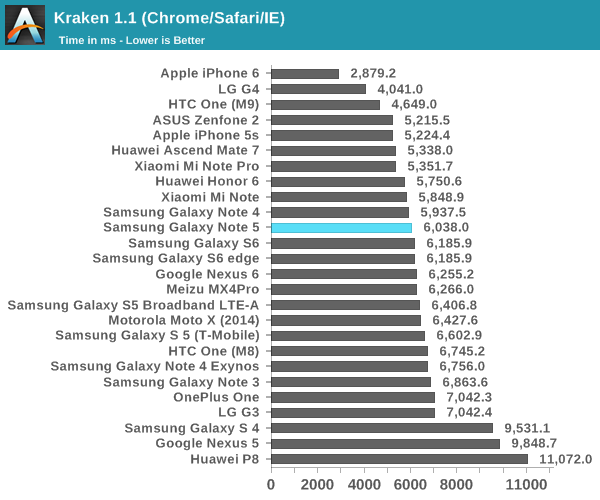
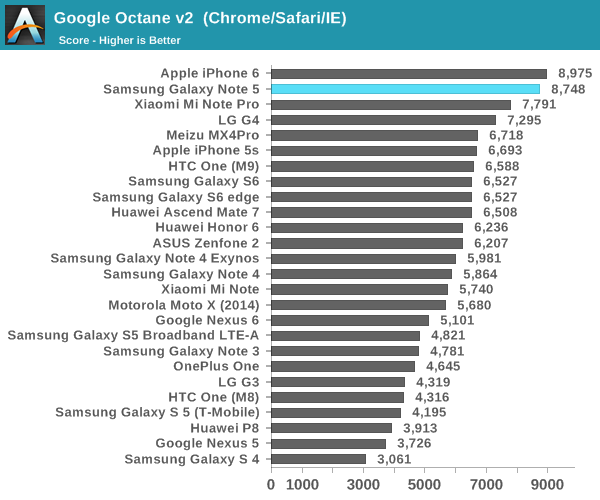
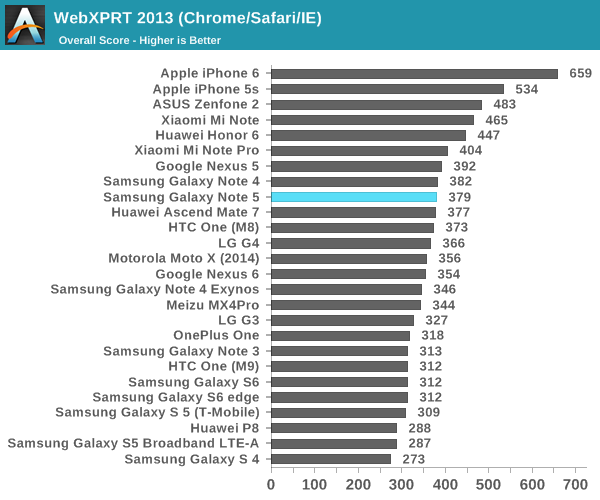
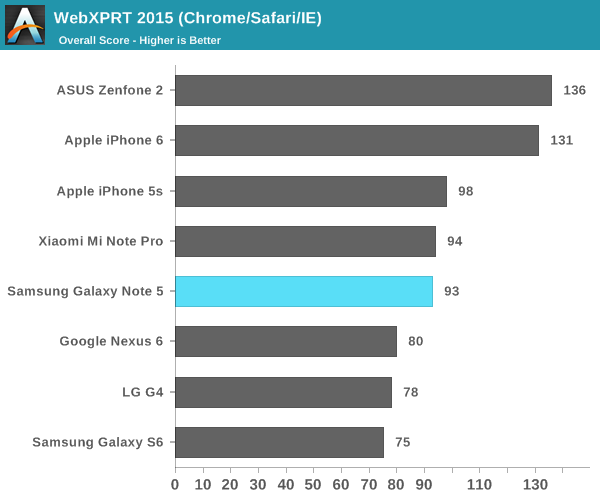

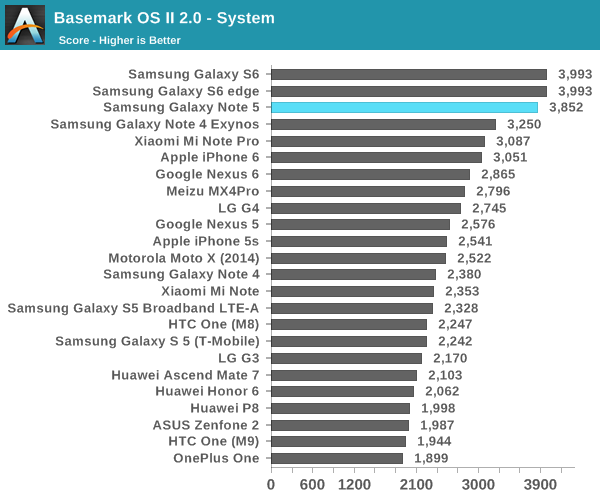
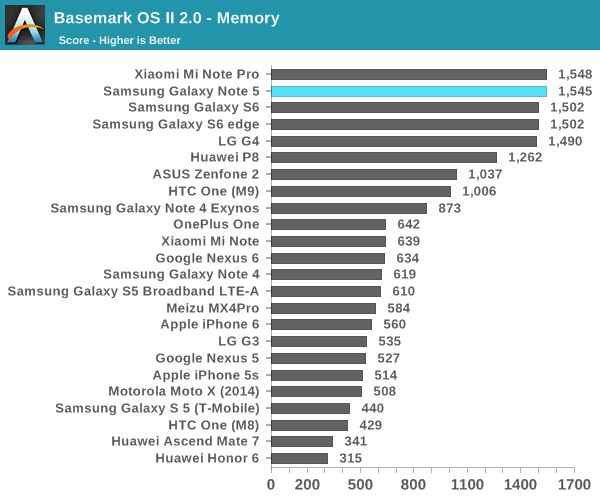
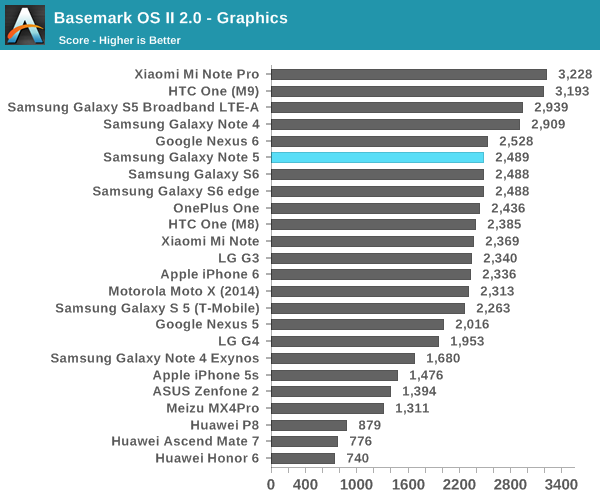

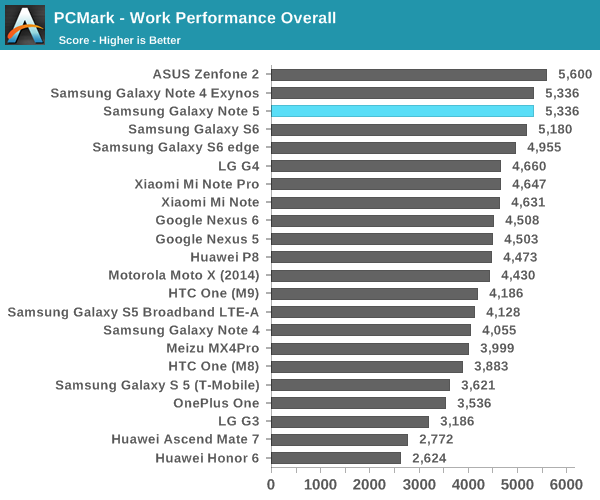

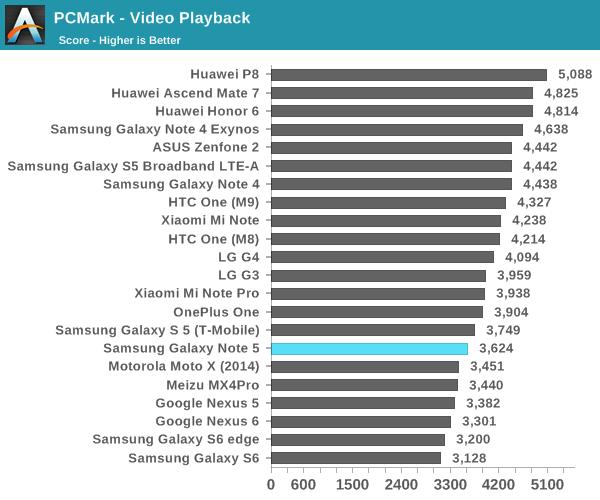
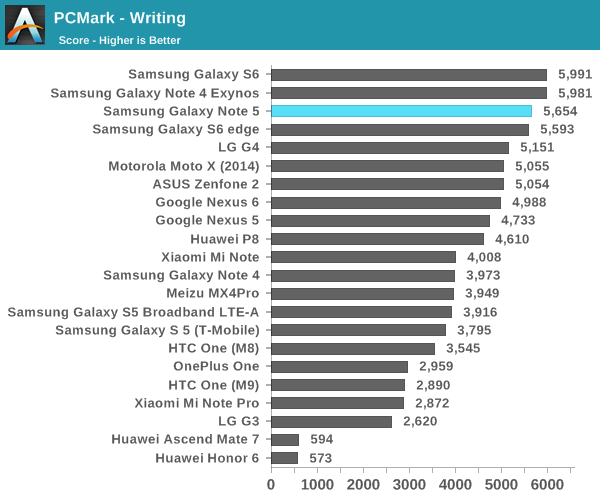
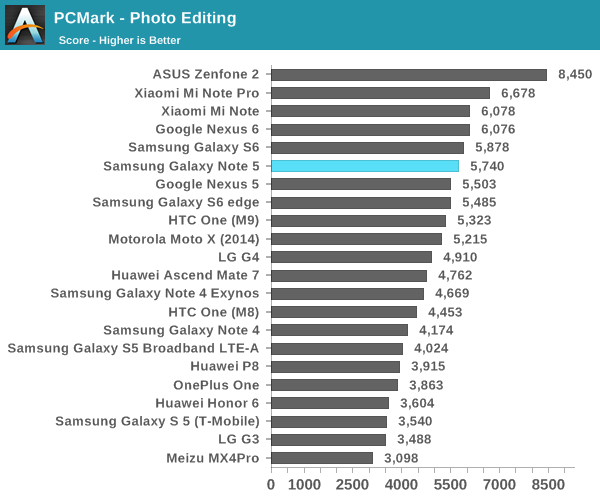
If you guessed that performance in these benchmarks would be similar to the Galaxy S6, you'd be right. Given the shared SoC and general commonality in components performance remains as high as it is with the Galaxy S6. In some cases we see improvements, likely a combination of changes to Chrome and changes to areas like the frequency governor to respond faster to changes in load. It's probably fair to say that the Exynos 7420 will continue to be the best SoC for Android mobile devices in 2015, although it's likely that we'll see significantly increased competition for 2016.










225 Comments
View All Comments
Le Geek - Friday, October 2, 2015 - link
I am curious as to why you referred to the new Note as the Note5 (without space) but the previous note was called Note 4.Ryan Smith - Friday, October 2, 2015 - link
That is the official name according to Samsung. It was the "Note 4" and for this iteration they've removed the space so that it's the "Note5".http://www.samsung.com/global/galaxy/galaxy-note5/
We typically follow the manufacturer's naming convention unless there's a problem in doing so.
danbob999 - Friday, October 2, 2015 - link
"With this generation of AMOLED, Samsung has definitely equaled the best LCDs on the market. I suspect within the next year or two it will be inevitable that Samsung AMOLED will be clearly superior to even the best LCDs"Anandtech has been saying this for years.
Kuzi - Saturday, October 3, 2015 - link
Except that in reality Amoled surpassed LCDs since 2014.Anandtech will not admit Amoled is great until Apple starts using it in their devices (my guess is next year). Of course Apple would bump up the resolution and give it a fancy name, and Anandtech will sing the praises of how amazing Apple's Amoled is. When in reality the screen panel will be made by Samsung or LG :p
PPI will become important and talked about by Anandtech again only when Apple bumps the resolution.
Peichen - Monday, October 5, 2015 - link
If AMOLED is anywhere close to IPS why aren't EIZO, NEC, Dell switch their professional lineup to AMOLED? Why are 31" calibrated IPS monitors going for $3000 while the same money can get you 55" 4K OLED TV?Just because your eyes cannot see the difference doesn't mean professionals cannot. That goes for your rant vis-a-vis iPhone.
Kuzi - Tuesday, October 6, 2015 - link
You can't compare Professional monitors with TVs. If these Dell. NEC monitors were using OLED technology then probably they would have cost double the amount.Also keep in mind that color accuracy of the Samsung OLED screens only became comparable to the best IPS LCDs since a year ago or so. So these manufacturers didn't get the chance yet to move to OLED. There are only cost and capacity considerations, it might be that Samsung is keeping all the capacity for themselves at this time.
Don't be surprised when in a year you see Apple move to OLED.
thedons1983 - Sunday, October 18, 2015 - link
LCD is crap compared to OLED, or AMOLED, there is no denying that, and those who don't buy into that fact, are utter morons. The reason they aren't yet ubiquitous, is cost. Every display will eventually replace LCD, with something superior, like OLED. Hence why top end Tvs are now transitioning to that tech, because it is simply much, much better technology. Apple just can't afford it, hence why they persist with inferior tech.Dobson123 - Friday, October 2, 2015 - link
Maybe it would be a good idea to address concerns regarding battery durability and quickcharge in the light of the non-removable battery. What should I do if my battery lost half it's capacity after 2 years? A normal user just can't buy a new on and change it himself.Peichen - Monday, October 5, 2015 - link
I'd like to know this as well. Maybe someone can go crazy and charge and discharge popular smartphones using its default charger for 100/200 cycles and run the same battery test to see if there are obvious signs of battery degradation.An iPhone 6s+, Z5, V10, Note 5, Moto X, Oppo something.
Infy2 - Friday, October 2, 2015 - link
Is the maximum display brightness reported here achievable simply with the brightness slider or just with the boost feature triggered by direct sunlight?